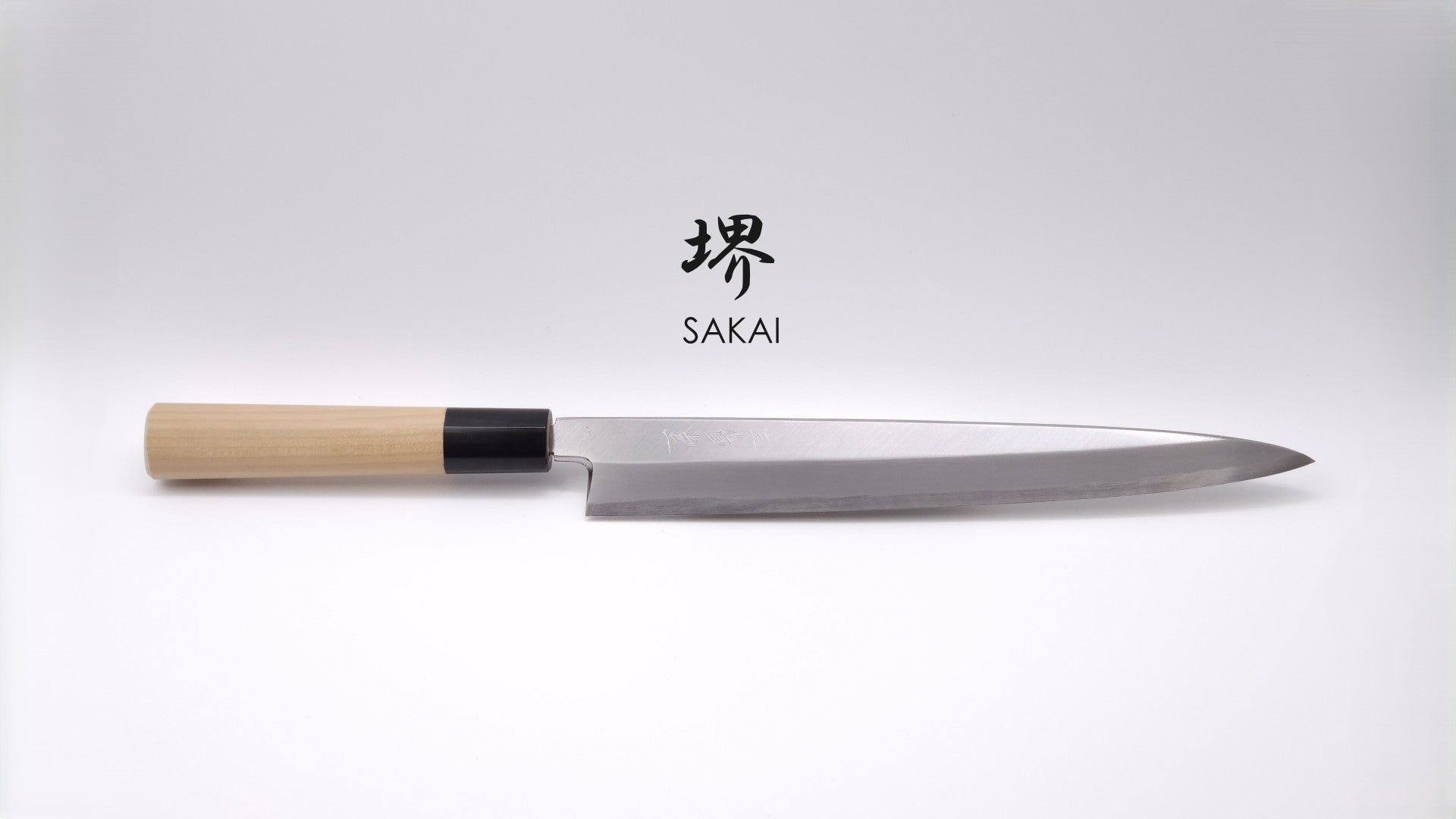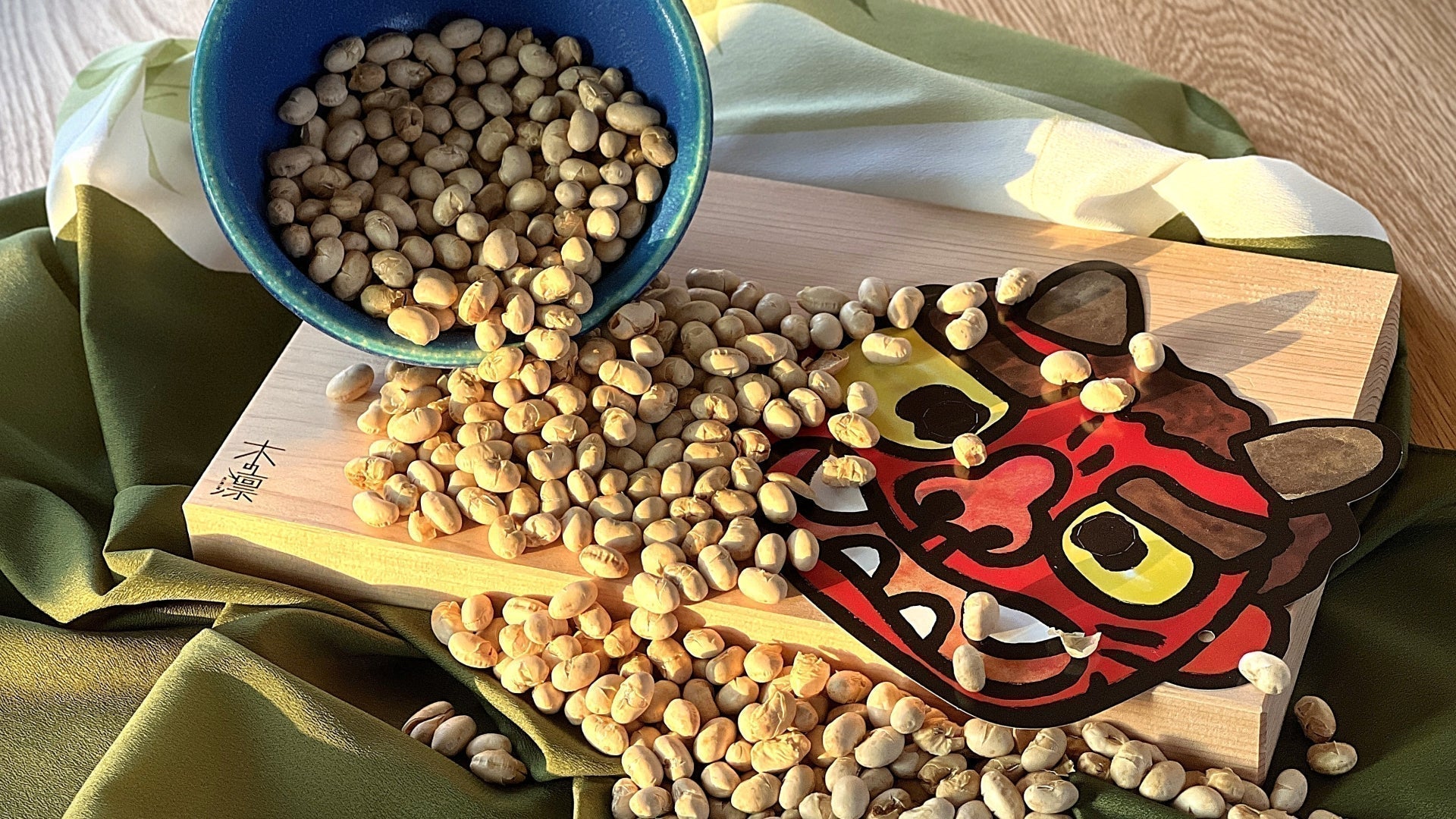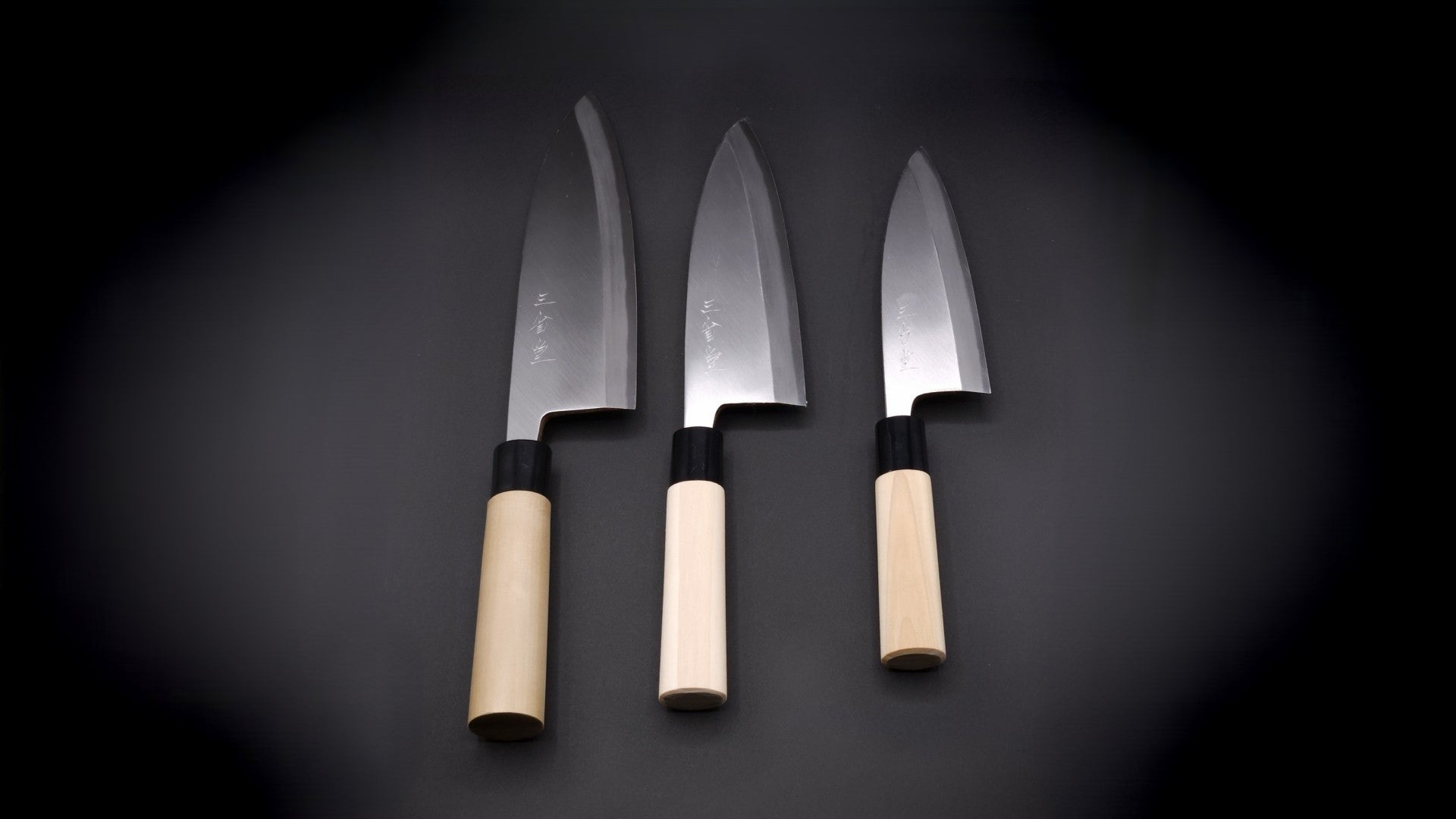
Sakai: The Heart of Japanese Knife Craftsmanship
In the world of culinary arts, the tools you use are as crucial as the ingredients themselves. For centuries, chefs have sought the unparalleled quality of Sakai knives, renowned for their exceptional sharpness and craftsmanship.
But what makes these Japanese kitchen knives stand out? Let's delve into the rich history and enduring legacy of Sakai knife making.
A Storied History of Sakai Knife Making
Discover how Sakai, a small city in Osaka, became Japan’s legendary hub for blades, evolving from samurai swordsmiths to the world’s finest kitchen knife makers.
Nestled in Osaka Prefecture, Sakai City has been a hub of blade production for over six centuries. During the Muromachi period (室町時代 - Muromachi Jidai, 1336–1573), Sakai's skilled blacksmiths crafted samurai swords, laying the foundation for the city's blade-making reputation.

Sakai, a historic and renowned center of knife craftsmanship, located in the heart of the Kansai region.
From Samurai Swords to Kitchen Knives
During the Edo period (江戸時代 - Edo Jidai, 1603–1868), Japan entered a long era of peace under the Tokugawa shogunate. As the demand for weapons declined, Sakai’s skilled swordsmiths began redirecting their mastery toward tools used in daily life.
They transformed their techniques, originally intended for forging the blades of samurai swords, into the creation of kitchen knives of extraordinary sharpness and balance.
This evolution marked not only a practical shift in production but also a cultural one: the artistry of warfare gave way to the artistry of cuisine, laying the foundation for the enduring Sakai knife tradition that continues to define excellence today.
The Tokugawa Seal of Quality
The introduction of tobacco by Portuguese traders in the 16th century created a demand for specialized knives to cut tobacco leaves. Sakai craftsmen rose to the occasion, producing superior blades that garnered official endorsement from the Tokugawa shogunate.
This recognition cemented Sakai's status as the premier producer of Japanese kitchen knives.
The Unmatched Craftsmanship of Sakai Knives
Sakai knives are revered for their precision, balance, and edge retention, results of centuries-old forging techniques and a meticulous division of labor among artisans.
Let's see what sets Sakai knives apart in the world of culinary tools.
Superior Sharpness
Each Sakai knife boasts a razor-sharp edge, allowing chefs to execute precise cuts that preserve the integrity and flavor of ingredients.
Masterful Craftsmanship:
The creation of a Sakai knife involves a collaborative effort among specialists: the blacksmith forges the blade, the sharpener hones the edge, and the handle maker ensures balance and comfort.
This division of labor reflects a deep commitment to quality and tradition.
Premium Materials
Many Sakai knives are crafted from high-carbon steel, the same material used in traditional samurai swords.
High-end models often feature Shirogami (白紙, White Steel) or Aogami (青紙, Blue Steel), known for their exceptional edge retention and durability.
Specialized Designs
From the slender Yanagiba, ideal for slicing sashimi, to the robust Deba, perfect for filleting fish, Sakai offers a range of knives tailored to specific culinary tasks.
Embracing a Sakai Knife in Your Culinary Journey
Owning a Sakai knife is more than possessing a kitchen tool; it's about holding a piece of Japanese heritage. The meticulous design and unparalleled performance of these knives can elevate your cooking experience, whether you're a home cook or a professional chef.
By choosing a Sakai knife, you're investing in a legacy of excellence and tradition.
Frequently Asked Questions About Sakai Knives
Learn more about the history, craftsmanship, and care of Sakai knives, Japan’s most celebrated kitchen blades. These FAQs help you understand why they’re prized by chefs worldwide.
Where are Sakai knives made?
Sakai knives are made in Sakai City (堺市), located in Osaka Prefecture, Japan. This historic city has been a center of blade production for over six centuries.
What is the history behind Sakai knives?
Their origin dates back to the Muromachi period (室町時代, 1336–1573), when local blacksmiths forged samurai swords. During the Edo period (江戸時代, 1603–1868), they shifted to crafting kitchen knives, preserving the same precision and skill.
What makes Sakai knives different from other Japanese knives?
Each Sakai knife is handcrafted through a division of labor among specialists — a blacksmith, a sharpener, and a handle maker — ensuring unmatched sharpness, balance, and quality.
What materials are used in Sakai knives?
High-end Sakai knives are often made from Shirogami (White Steel) or Aogami (Blue Steel), both known for their excellent edge retention, sharpness, and ease of resharpening.
Which types of Sakai knives are most popular?
Among the most renowned are the Yanagiba (for slicing sashimi), Deba (for filleting fish), and Usuba (for vegetables). Each design serves a specialized culinary purpose.
Are Sakai knives suitable for home cooks?
Yes. While many professionals rely on Sakai knives, they are also ideal for home chefs seeking precision, longevity, and an authentic experience of Japanese craftsmanship.
How should I care for my Sakai knife?
Hand-wash only with mild soap and dry immediately.
Avoid dishwashers, prolonged moisture, or acidic foods. Regular honing and occasional professional sharpening keep the blade in prime condition.
For a more comprehensive guide on knife maintenance, check out our dedicated article here.
Why are Sakai knives considered a symbol of Japanese craftsmanship?
Because each knife reflects centuries of tradition, artisanal skill, and cultural pride. Owning a Sakai knife means holding a piece of Japan’s enduring dedication to mastery and quality.



